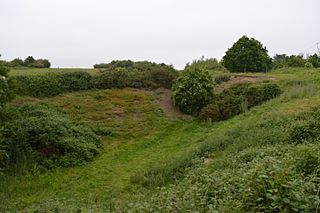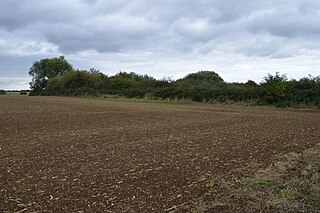| Site of Special Scientific Interest | |
 | |
| Area of Search | Berkshire |
|---|---|
| Grid reference | SU 565 650 [1] |
| Interest | Geological |
| Area | 1.6 hectares (4.0 acres) [1] |
| Notification | 1984 [1] |
| Location map | Magic Map |
Brimpton Pit is a 1.6-hectare (4.0-acre) geological Site of Special Scientific Interest west of Aldermaston in Berkshire. [1] [2] It is a Geological Conservation Review site. [3]

A Site of Special Scientific Interest (SSSI) in Great Britain or an Area of Special Scientific Interest (ASSI) in the Isle of Man and Northern Ireland is a conservation designation denoting a protected area in the United Kingdom and Isle of Man. SSSI/ASSIs are the basic building block of site-based nature conservation legislation and most other legal nature/geological conservation designations in the United Kingdom are based upon them, including national nature reserves, Ramsar sites, Special Protection Areas, and Special Areas of Conservation. The acronym "SSSI" is often pronounced "triple-S I".

Aldermaston is a mostly rural, dispersed settlement, civil parish and electoral ward in Berkshire, England. In the United Kingdom Census 2011, the parish had a population of 1015. The village is in the mid-Kennet alluvial plain and bounds to Hampshire in the south. It is roughly equidistant from Newbury, Basingstoke and Reading, centred 46 miles (74 km) west-by-south-west of London.

Berkshire is a county in South East England. One of the home counties, Berkshire was recognised by the Queen as the Royal County of Berkshire in 1957 because of the presence of Windsor Castle, and letters patent were issued in 1974. Berkshire is a county of historic origin, a ceremonial county and a non-metropolitan county without a county council. The county town is Reading.
This former gravel pit contains fossil molluscs and pollen which were laid down during a warm phase 80,000 years ago which was first recognised at this site, and is called the Brimpton Interstadial (Marine Isotope Stage 5a). The pit is also important for helping to understand the development of the River Thames and its tributaries. [4] [5]

The River Thames, known alternatively in parts as the Isis, is a river that flows through southern England including London. At 215 miles (346 km), it is the longest river entirely in England and the second-longest in the United Kingdom, after the River Severn.
A footpath runs along the side of this site, but no geology is visible. The western half is part of a field and the eastern half is a dip in an area of wood and scrub.



















